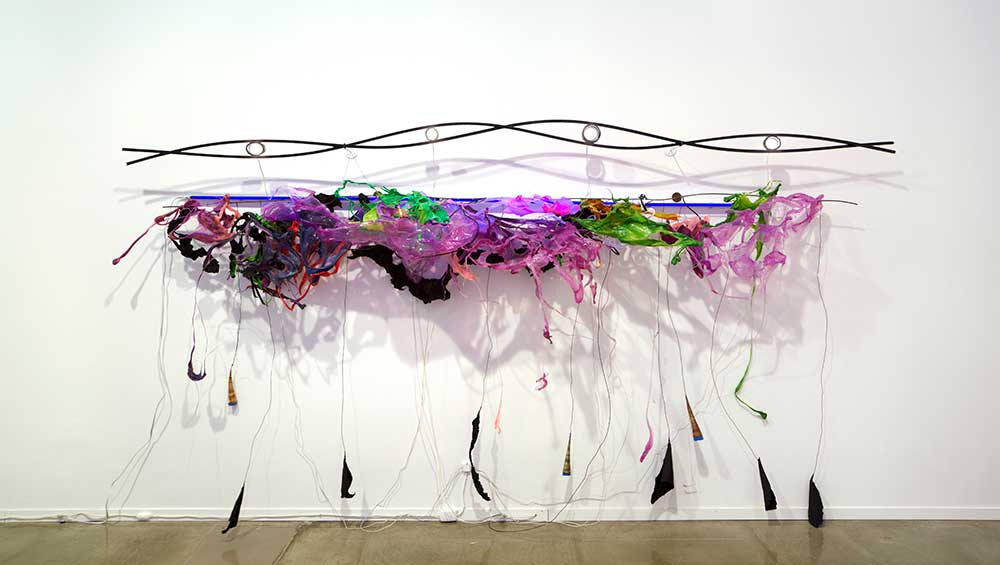
Judy Pfaff, Ram’s Delhi, 2012. Wood, mild steel rod, melted plastics, black aluminum foil, and LED and UV Fluorescent light, 70 x 132 x 17 in. Collection of the artist, New York.
Grey Art Museum at New York University, New York City
1 April – 19 July 2025
by YASMEEN M SIDDIQUI
The jarring contrast between Jeanne Silverthorne’s pumped-up rubber and resin Untitled (Chandelier) from 1994 and Senga Nengudi’s perceptibly shrunken nylon mesh, sand, and mixed media Untitled (2011) marks the one central misfire in an otherwise elegantly composed exhibition at the Grey Art Museum. The exhibition, Anonymous Was a Woman: The First 25 Years, draws from a deep bench of artists supported by the Anonymous Was a Woman (AWAW) award. With 41 artists on view out of 251 grantees, the exhibition, but more so the catalogue that includes all the recipients, demonstrates the gift’s broad influence on the art world. AWAW was founded and is still led by photographer and philanthropist Susan Unterberg, who herself remained anonymous until 2018. History repeats. In 1994, the National Endowment for the Arts terminated grants to individual artists. In response, every year between 1996 and 2020 AWAW has awarded unrestricted gifts of $25,000 (£18,400) to 10 female artists over the age of 40. Remarkably, since 2020, the number of awards and the amount of the AWAW gift have increased.
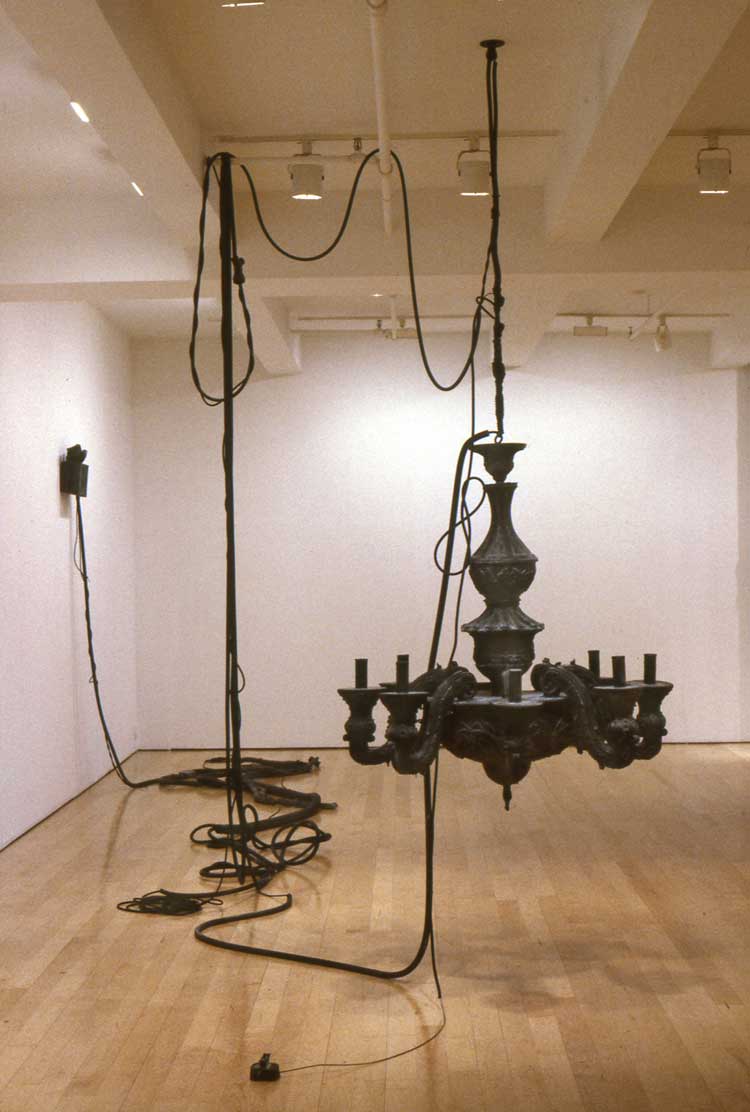
Jeanne Silverthorne, Untitled (Chandelier), 1994. Rubber and resin sculptural installation, 56 x 50 in. diameter; EXIT sign: 15 x 14.5 x 5 in. Collection of the artist, New York
Nengudi’s work, which often draws its strength from bodily tension and collapse, feels diminished by the way it is hung in this context – its understated power undercut by its placement across from Silverthorne’s more theatrical installation. Its effect is especially muted when juxtaposed with the lush red velvet of Beverly Semmes’ RC (2014) and the bodily directness of Ida Applebroog’s Monalisa (2009). Yet, three moments in the show held my full attention.
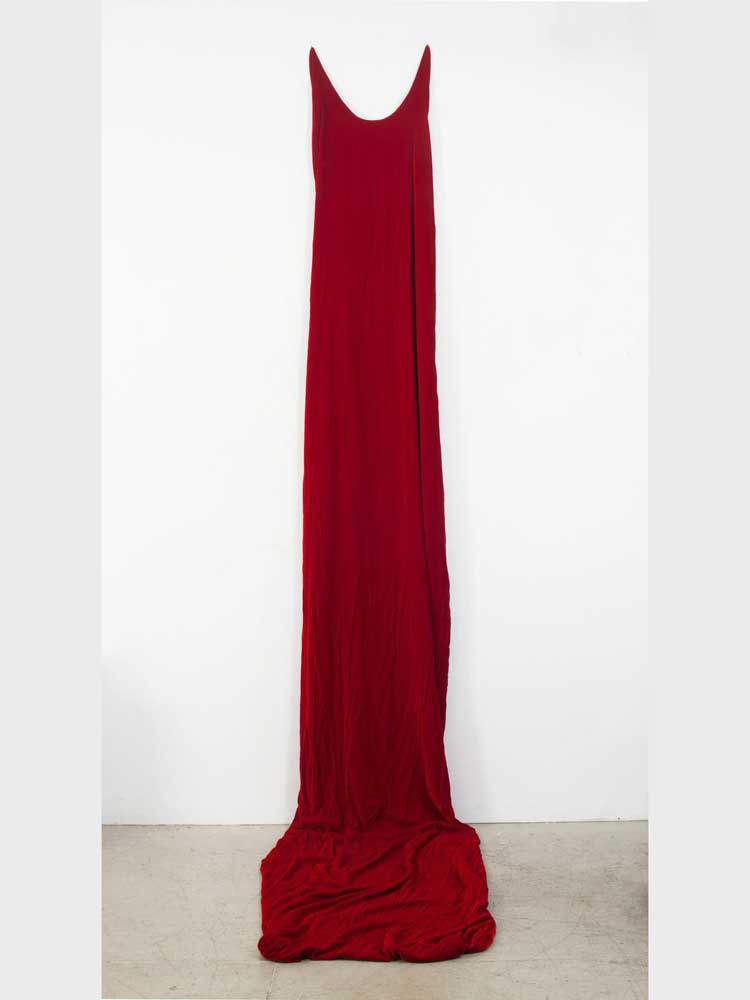
Beverly Semmes, RC, 2014. Velvet fabric, 119 x 35 x 70 in. Grinnell College Museum of Art, Iowa. Marie-Louise and Samuel R. Rosenthal Fund 2014.020.
At the centre of one gallery, Petah Coyne’s monumental Untitled #1242 (Black Snowflake), 2007-12, commands the room with its wax-dipped chandelier, taxidermy peacock, ribbons, glass bulbs, chicken wire, sash weights and textiles – anchoring the space with its density. The title affords us a literary allusion, a feature of Coyne’s work in general: Hiroshima in the wake of the atomic bombing as told by Japanese author Masuji Ibuse’s in his 1965 novel Black Rain. Around it, An-My Lê’s stark gelatin silver prints from the 29 Palmsseries (2003-2004) and Jungjin Lee’s Unnamed Road #03(2010) hover in haunting counterpoint. Lee and Lê’s desolate landscapes evoke loss and vastness, magnifying the spectacle of Coyne’s hanging mass. The room’s compressed verticality – its ceilings seemingly lowered – evokes an Alice in Wonderland shift in scale, echoing the chandelier motif from Silverthorne to Coyne. The oscillation between modest, grief-filled photographs of expansive terrains and overloaded objects recalling decadent interiors is one of its strongest spatial and conceptual elements of the show.
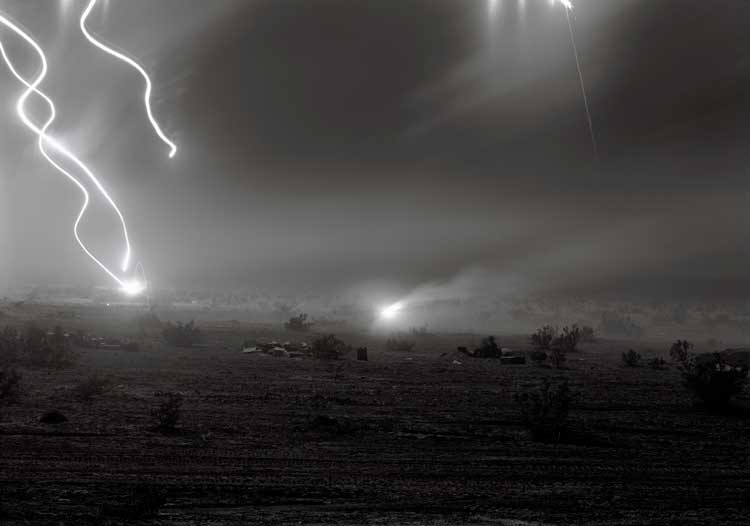
An-My Lê, Night Operations IV, from 29 Palms, 2003–4. Gelatin silver print, 26 x 37 1/2 in.
Courtesy the artist and Marian Goodman Gallery, New York.
There is a nod to time-based media, but little indication of its growing place and role in contemporary art beyond Claudia Joskowicz’s 2015 Hay Muertos que no Hacen Ruido (Some Dead Don’t Make a Sound) and Mary Lucier’s Summer, or Grief from 1998. Installed with subtlety – a bench before grey walls that hold peripheral vision calm – it allows focus and complete attention on Lucier’s single-channel video, which unfolds as a meditation on time where texture, temperature and impermanence are felt. The dryness of grass, the slow trickle of water, the passage of light and shadow – it is a spellbinding work that deserves and rewards full attention.
Lastly, near the show’s entrance or exit – depending on your route – Anne Chu’s Maranao Man (2004) narrowly escapes being overlooked. This bronze sculpture, with its intricate surface patterning, delicate patina and haunting gaze, is a quietly commanding work that calls for closer viewing. This guardian is inspired by a mostly Muslim Filipino ethic, or the Moro Muslims, a group from the island of Mindanao in the Philippines who are recognised for their traditional crafts and literary tradition. Chu completed this seminal work three years after receiving the AWAW gift.
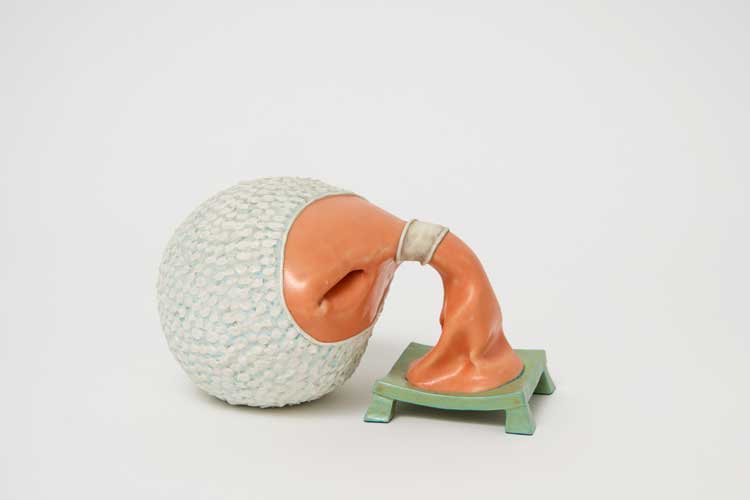
Kathy Butterly, Heavy Head, 2003. Porcelain, earthenware, and glaze, 3 3/8 x 6 x 3 3/4 in. Collection of the artist, New York © 2025 Kathy Butterly. Courtesy the artist and James Cohan, New York. Photo: Alan Weiner.
The challenge with institution-focused group shows lies in what is unintentionally revealed. Who is placed at the heart of the room, surrounded, exalted; who is not included; and who is piled in. Guest curators Nancy Princenthal and Vesela Sretnović tracked the recipients to note ways contemporary practice has developed over the last 25 years. Perhaps most convincing is the prevalence of craft and its position in the market, as evidenced by the collections and galleries that have lent work, and that demonstrate how usages of materials traditionally identified with craft-based practices are cast anew. From Chu to Coyne, to a robust advocacy of Kathy Butterly’s ceramics and Sonya Clark. AWAW’s power to shift an artist’s path is asserted, but the exhibition’s spatial narrative risks advocating hierarchies already baked into the art world’s architecture. What remains to be analysed and narrated in future shows focused on particular AWAW gift recipients is how support from the grant catalysed or shaped their trajectories within the broader field of art, perhaps asking: Who were their peers? What was exchanged? What did they make before the gift? What did they make after the gift?